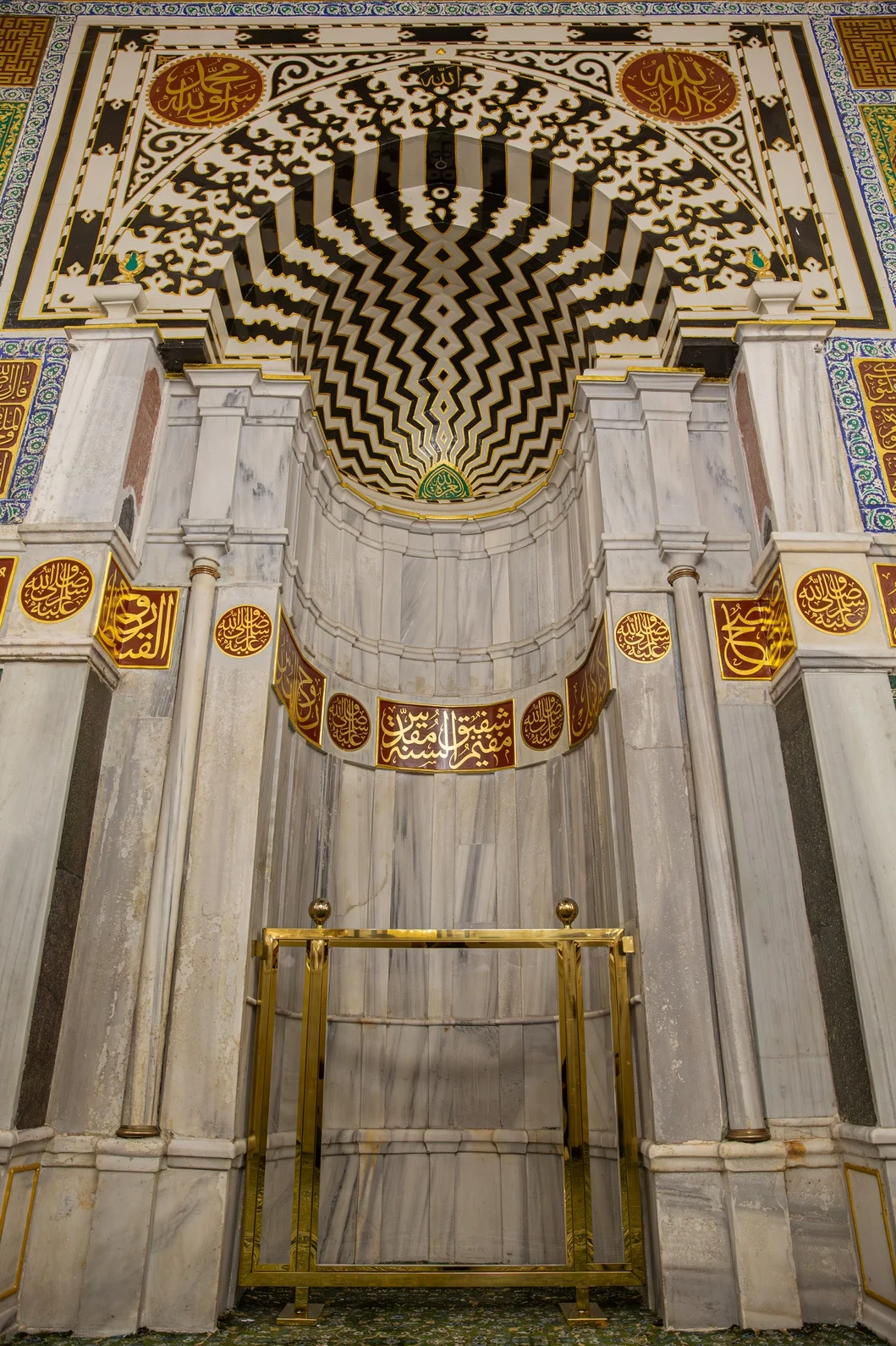
Mihrabs of the Prophet's Mosque
The mihrab in the Prophet’s Mosque is a prominent symbol indicating the direction of the Qibla and serving as the Imam’s place during prayer. Over time, mihrabs have evolved, starting from the era of the Prophet Muhammad (peace and blessings be upon him) and continuing through subsequent periods, with Muslim rulers adding refined Islamic architectural touches characterized by intricate engravings and beautiful decorations.
Meanings of the Word "Mihrab" in the Quran
The word "mihrab" appears in the Quran in four contexts, each with distinct connotations:
-
As a house: “Every time Zakariya entered upon her in al-Mihrab, he found with her provision...” [Al-Imran: 37].
-
As a prayer place: “So the angels called out to him while he was standing in al-Mihrab...” [Al-Imran: 39].
-
As a prayer place: “So he came out to his people from al-Mihrab and revealed to them to exalt Him (Allah) in the morning and afternoon.” [Maryam: 11].
-
As the main part of a house: “And has the news of the adversaries come to you when they climbed over the wall of al-Mihrab?” [Sad: 21].
History of the Mihrabs in the Prophet's Mosque
-
During the Prophet’s Time (peace and blessings be upon him)
The Prophet’s Mosque did not have a concave mihrab during the time of the Prophet (peace and blessings be upon him) or the Rightly Guided Caliphs. After the Qibla was changed from Al-Aqsa to the Kaaba, the prayer area was moved to the mosque’s southern wall. The Prophet initially prayed at the Aishah Pillar, then at the Perfumed Pillar.
-
During the Umayyad Era
Caliph Al-Walid ibn Abdul Malik was the first to create a concave mihrab in the Prophet’s Mosque during its expansion between 88-91 AH, under the supervision of Umar ibn Abdul Aziz. This mihrab served as a distinct marker for the Qibla on the mosque’s wall.
-
Architectural Developments
Over the centuries, Muslims adorned mihrabs with Islamic engravings and decorations, making them a prominent symbol of the Qibla and mosque architecture.
Current Mihrabs in the Prophet's Mosque
-
The Noble Prophet’s Mihrab: Located in the Noble Rawdah to the left of the Minbar, associated with the Prophet’s (peace and blessings be upon him) prayer position.
-
The Ottoman Mihrab: Situated in the southern wall of the mosque, used today for leading prayers.
-
The Suleiman (Hanafi) Mihrab: Located west of the Minbar, created for worshippers of the Hanafi school.
-
The Fatimah Mihrab: Positioned south of the Night Prayer Mihrab inside the sacred enclosure.
-
The Sheikh of the Haram Mihrab: Established during the Majidi construction, formerly located behind the Agawat Platform.
Conclusion
The mihrabs of the Prophet’s Mosque are more than architectural landmarks; they are living witnesses to the evolution of Islamic architecture and enduring symbols of the spirituality and sanctity of the place. They reflect the Muslims’ connection to their sacred heritage and their commitment to preserving the essence of the Prophetic message for future generations.